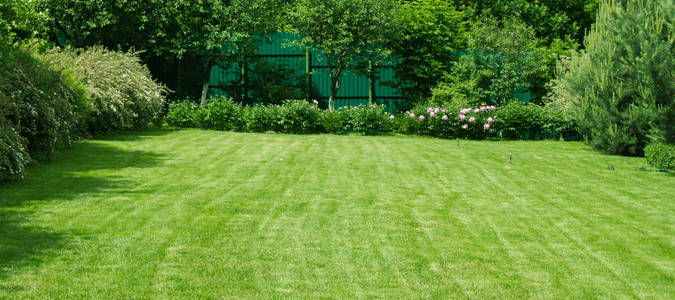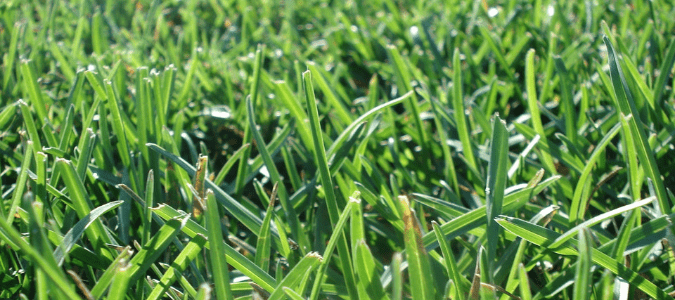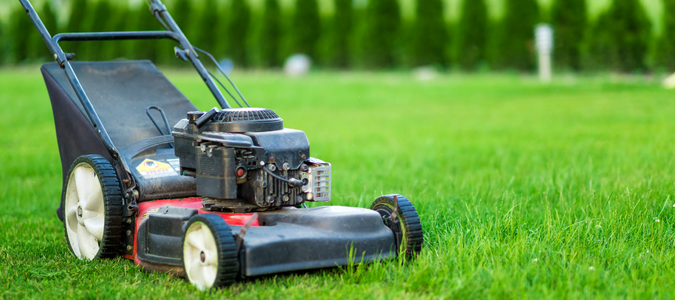A lush, green lawn is a goal for most homeowners. Beautiful, thickly growing grass improves curb appeal. It also makes you want to spend more time outdoors. As springtime nears, you may be thinking more about lawn care. It’s important to know when to mow new grass, so you can maximize its healthy growth.
When your existing grass gets thin or damaged, it makes sense to lay new sod or plant new grass. But how should you care for the new grass once it starts growing? If you mow it too early, its roots can be damaged. The mower blades can actually yank the young grass right out of the ground. The new grass blades can also be damaged by being cut, unless they’ve had time to get thicker and stronger.
This is why it’s so important to mow new grass at the optimal time, to keep it as healthy as possible.
When Is the Right Time to Mow New Grass?
Grass blades need time to strengthen, and the roots need time to get established in the soil before the first mowing. If you’ve laid out new sod in your yard, you’ll need to wait at least two to three weeks before mowing the first time. This will give the sod time to establish its roots.
If you’re growing new grass from sprigs or plugs, you’ll need to wait even longer before mowing—more like four to six weeks. And if you are growing from seed to bring back dead grass, you’ll need to wait at least a month or two. Note that it won’t be ready to mow until all the seeds have germinated.
Also, remember that with any grass, whether established or newly planted, it’s best to cut no more than a third of its length at once. Cutting a third of the height of the grass is optimal because it keeps the lawn healthy and won’t impede its growth.
For some homeowners, taking care of their lawn from mowing to fertilizing, top dressing, aerating and beyond is a fun point of pride. For many others, it makes more sense to hire a lawn care specialist to handle all aspects of caring for this precious asset of your home.
A lawn care professional can set up a customized and effective lawn care schedule to keep your grass lush, green and healthy. They can also manage seasonal lawn care like fertilizing and aerating, while addressing any pest or disease issues that may crop up along the way. That way, you can enjoy the lawn of your dreams without the guesswork or the headache involved with keeping it that way.
Lawn Mowing Tips for Healthy Grass
Mowing the grass can be a satisfying and rewarding task. It feels good to see the results of your hard work—a beautiful lawn, ready for playing, relaxing or simply admiring the beauty of the outdoors. Knowing some basic lawn mowing tips will help keep your grass healthy throughout the growing season.
- Always mow your grass when it’s dry. Mowing wet grass can cause several different problems. It’s more likely to spread both weeds and common grass diseases. It also spreads wet clumps of grass that can clog the growing grass, preventing it from getting the light, oxygen and moisture it needs to grow.
- Never cut more than a third of the grass’s height at one time. This requires setting your mower blade at the right height. Mowing the grass too short can leave the grass blades vulnerable and weak.
- Leave grass clippings on the grass, rather than bagging them up. They break down quickly, and as they do, they return important nutrients to the soil and the growing grass.
- Keep your mower blade sharp. When the mower blades get too dull, they tear up the grass rather than cutting it nicely. This causes ragged, brown, unsightly tips. It’s a good idea to have your mower tuned up each spring, including having the blades sharpened. This will keep it in great shape.
If all that sounds like a lot to keep up with, that’s understandable. Some people love taking care of the yard, but others don’t have the time, energy or knowledge to manage it all. That’s why many people hire a lawn care specialist to take the guesswork out of maintaining a beautiful, thriving lawn.
What Else Can I Do to Keep My Lawn in Tip-Top Shape?
Be sure to fertilize at the right times. For most yards with warm-season grasses like St. Augustine, zoysia, bermuda or buffalo grass, this means once in spring. A second fertilizer application in the fall, about six weeks before the first expected freeze, will help the grass resist winter weeds and recover more quickly in the spring. If you’re unsure how to fertilize your lawn correctly, reach out to a pro.
Remember that you don’t have to hold yourself to a strict mowing schedule. During spring, this may be very frequent—once or even twice a week, as the grass grows quickly after its dormant season in winter. When the high heat of summer sets in, your grass might slow down in its growth, especially if you’re in a drought-prone area. During these phases, it won’t need to be mowed quite as often.
Keep in mind that hiring a lawn care specialist to handle all your mowing and seasonal lawn care needs is a great option for many homeowners. It takes the physical work off your to-do list, leaving you more time for other activities. A reputable lawn care company also uses well-maintained equipment that will keep your lawn in excellent condition, rain or shine.
Can You Mow Damp Grass?
In general, it’s not a good idea to mow damp or wet grass. When the grass is wet, mowing it can spread diseases and weeds more easily. It can also cause muddy wheel ruts in the lawn, and leave clumps of wet grass that prevent the growing grass from getting the nutrients it needs to thrive.
But, how can you mow your grass if it never gets a chance to fully dry out? This can be an issue during spring, when frequent rains promote a lot of fast growth in your lawn but also prevent it from drying out between rains.
If you have to mow when the grass is damp, make sure to do it with a mower that has sharp blades. If you mow wet grass with dull mower blades, it’s more likely to cause damage, not the lush, green look most of us covet in a beautifully mowed lawn.
Dull mower blades can even tear grass out by the roots. This creates brown patches in the lawn that will have to be re-seeded or sodded to recover.
If you need to mow wet grass, it’s also important to pay extra close attention to the height of your mower blade. Cutting the grass too short when it’s wet will leave big, wet clumps of long grass blades on the lawn. If the grass is tall, cut no more than a third of its height, and then mow again a few days or a week later to shorten it further. Though this is extra work, it’s a better approach to bringing the grass down to the height you want. If this seems overwhelming, contacting a lawn care expert is a great option.
ABC Can Help With Your Lawn Care Needs
The best way to keep your lawn in shape is to create a lawn care schedule that works best for your yard. Instead of agonizing over the perfect lawn calendar for your particular situation, contact ABC Home & Commercial Services. Our lawn care specialists can provide you with a routine that will have your lawn ready every spring.



